Early September marked our first return to Europe since the start of COVID. Crystal blue skies and warm air greeted us as we exited the airport. As we drove to our Airbnb, our driver Pedro explained some of the areas we cruised by.
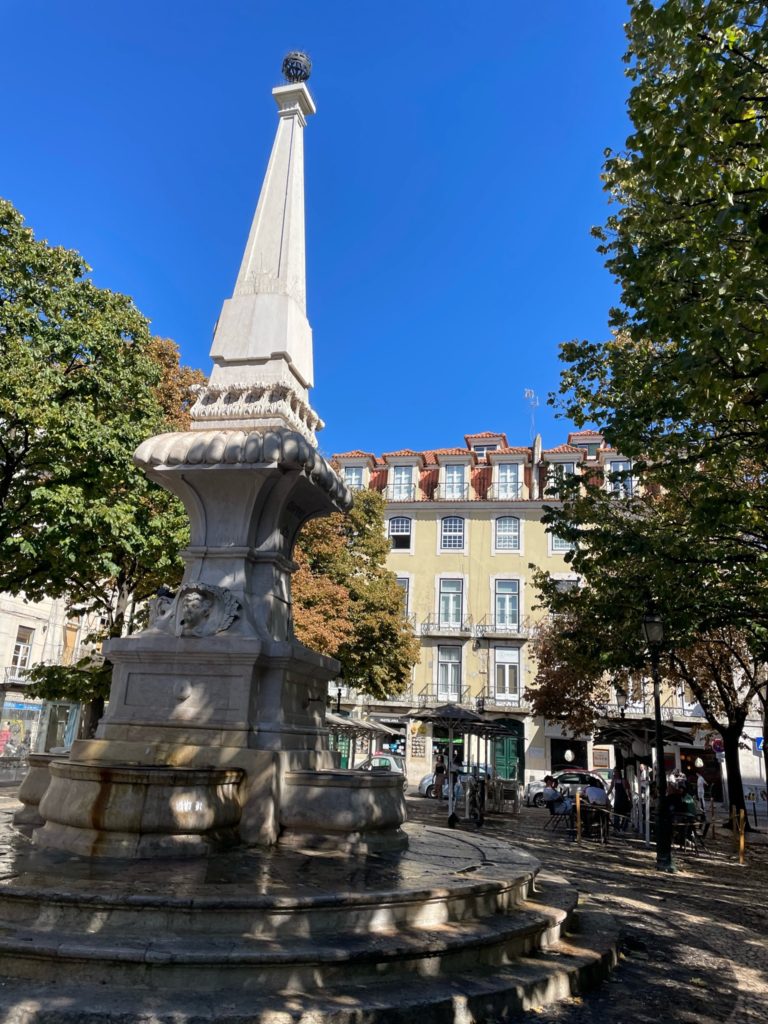
Fortunately, our accommodation in the Bairro Alto (meaning upper quarter in Portuguese) was ready early. The upstairs terrace featured a grand view of the city and the Tagus river. Once the bags were dropped, it was off to the streets for a little bit of exploration.
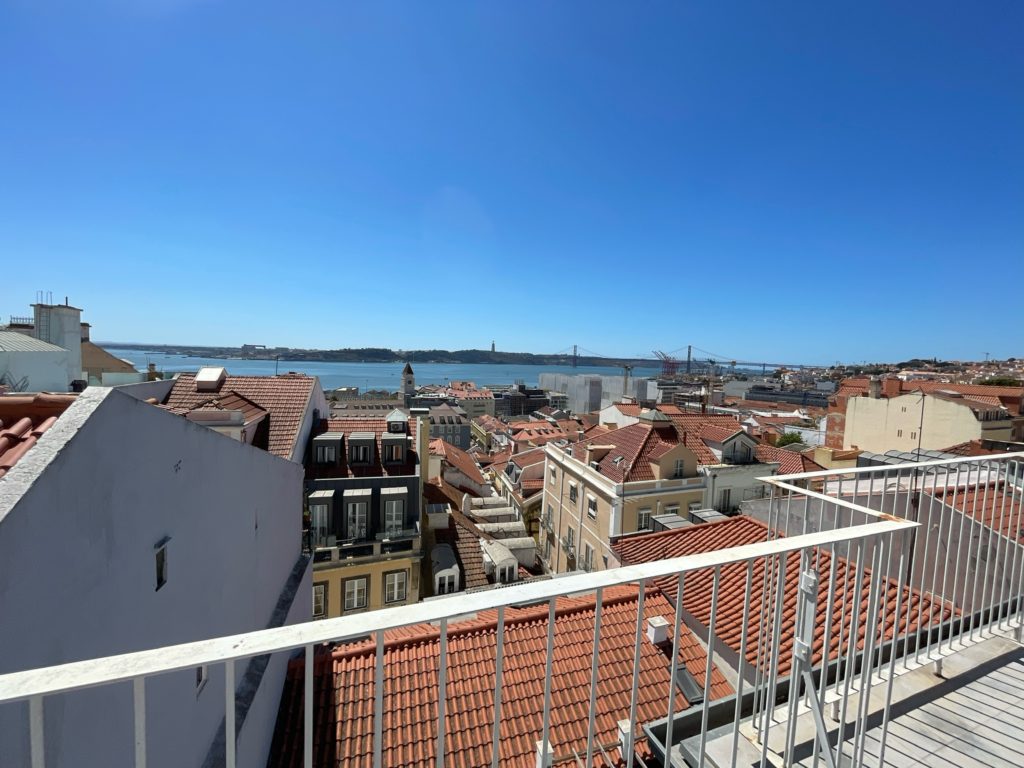
It wasn’t far before we stopped at a little restaurant bar called Barbica for our first taste of some Portuguese food and wine. During the two hour meal, we sampled a Portuguese board of cheeses and meats, a bruschetta with a twist containing sardines which were delicious, some olives on the side and lots of sangria and white wine. Set on an incline, those of us facing downward had a perfect view of the Ascensor de Bica, a 19th century streetcar that rides up and down a sharp incline that is a quaint street still in the Bairro Alto district where we were staying.
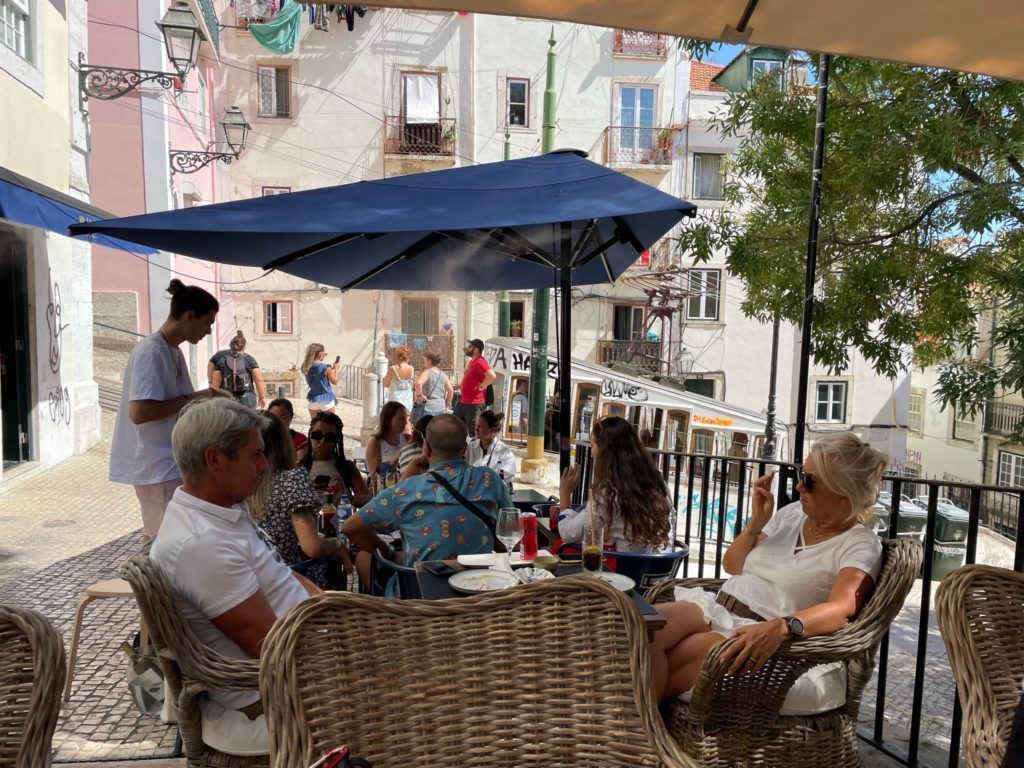
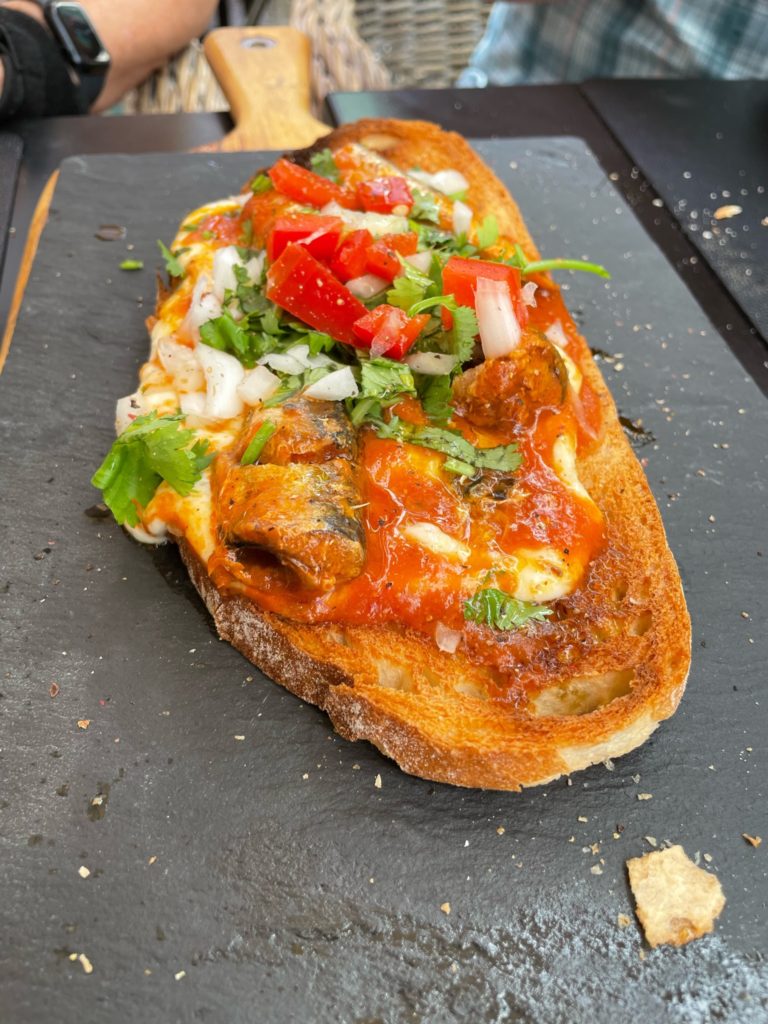
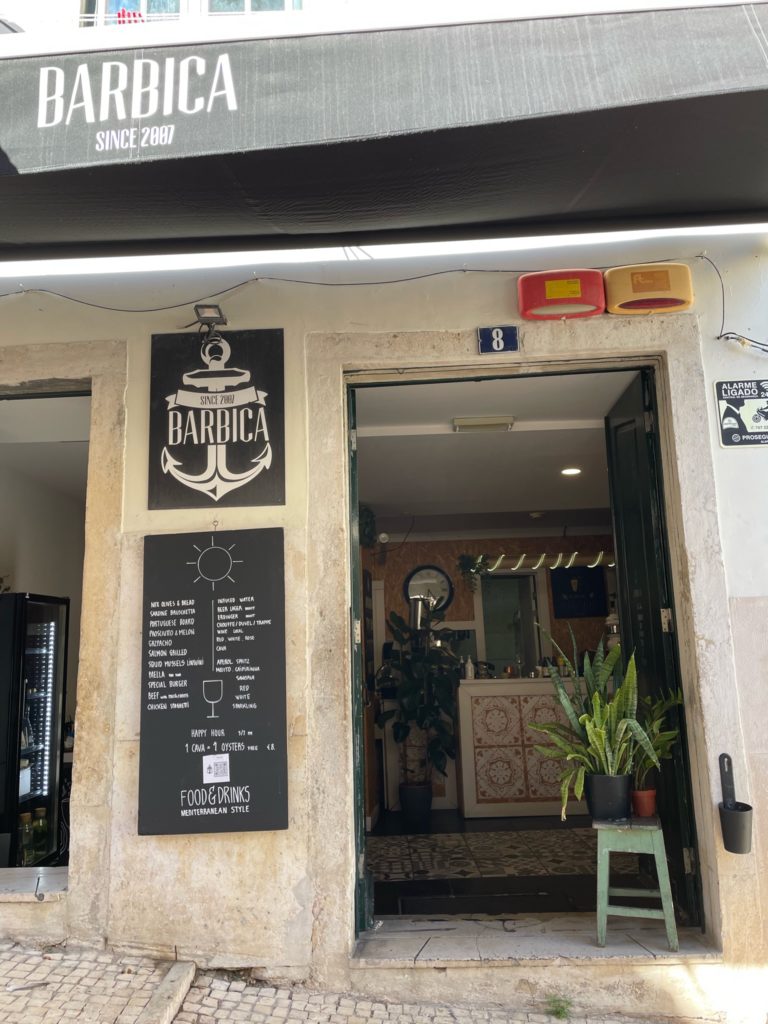
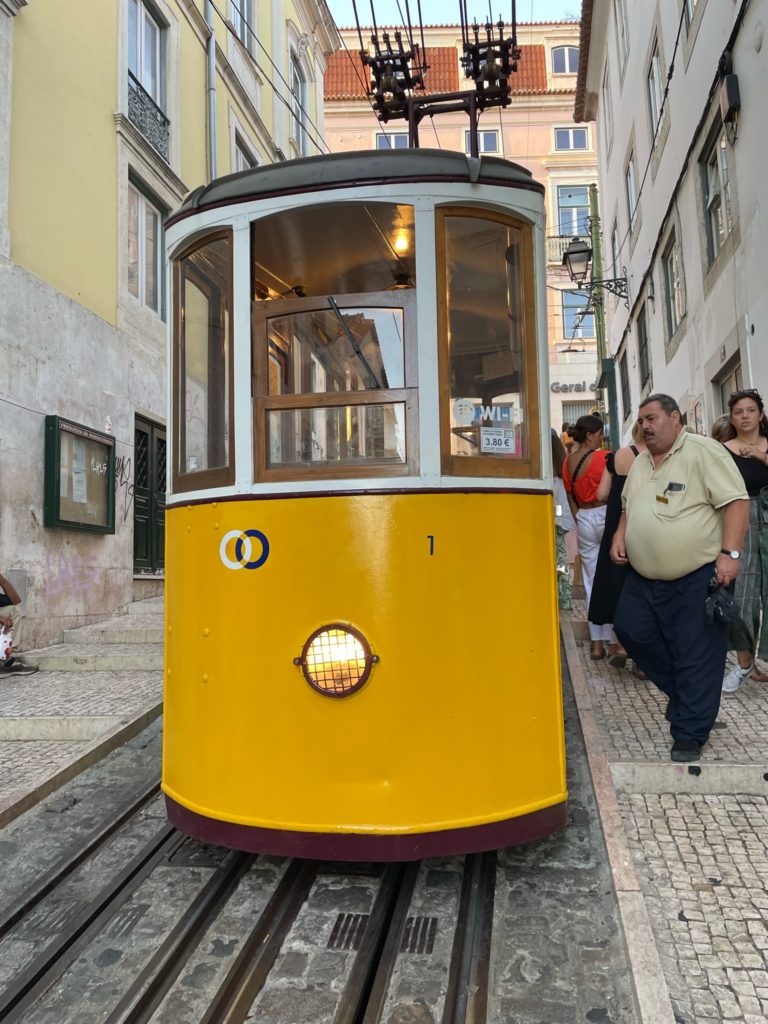
But the food journey wasn’t over yet! A short downward walk later and we were browsing through a small outdoor market at the Jardim Dom Luis just across from the TimeOut Market which ended being our last stop of the day.
Formerly a traditional market hall built in the 1890’s and located in the historic Mercado da Ribeira in Cais do Sodre, this landmark building boast over two dozen restaurant stalls representing some of the country’s top chefs.
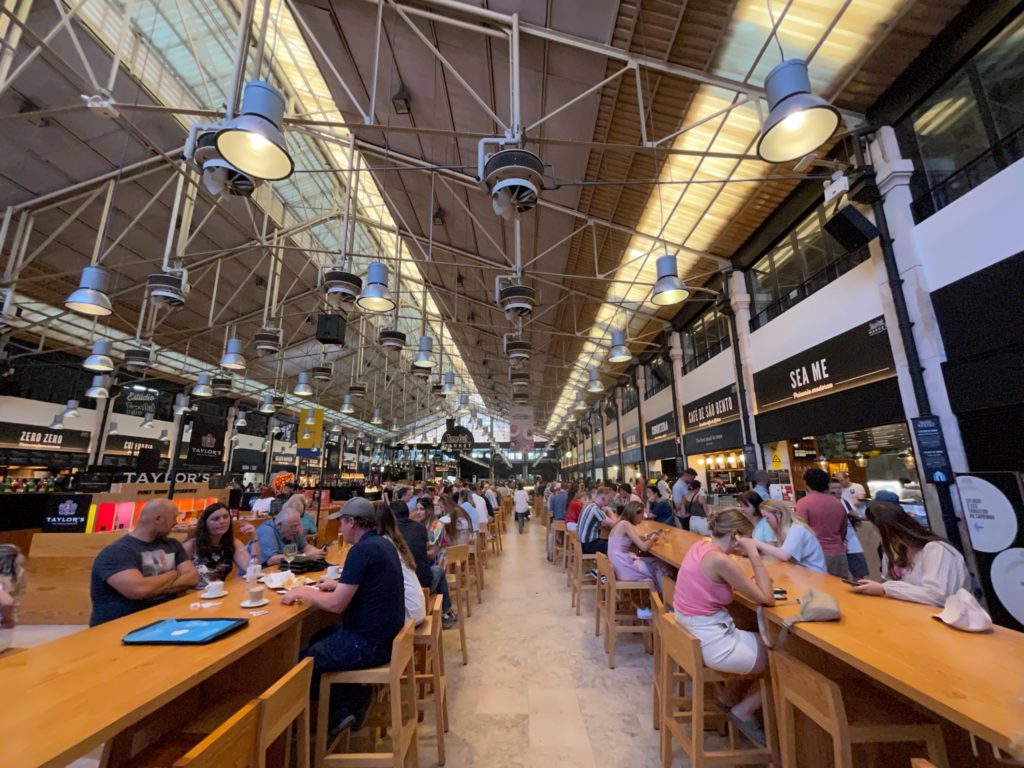
Of course, hubby and sister couldn’t resist the Taylor’s booth where a flight of seven ports of different vintages were to be sampled. The plethora of different restaurants leave you salivating and overwhelmed at the choices. Seafood, all different kinds of meats, vegetarian, desserts are at your fingertips to choose. Place your order, return to your shared high top table, and wait for your buzzer to flash that signals your order is ready.
Relaxed and a bit tipsy from the day, we decided that we couldn’t tackle the walk up to the flat, so we paid the 3.40 Euro each to ride the Ascensor up to the top.
Finally, the day wouldn’t be compete without watching the sunset from our terrace and then it was off to bed at nine (jet lag) to get fortified for our full day on the morrow.
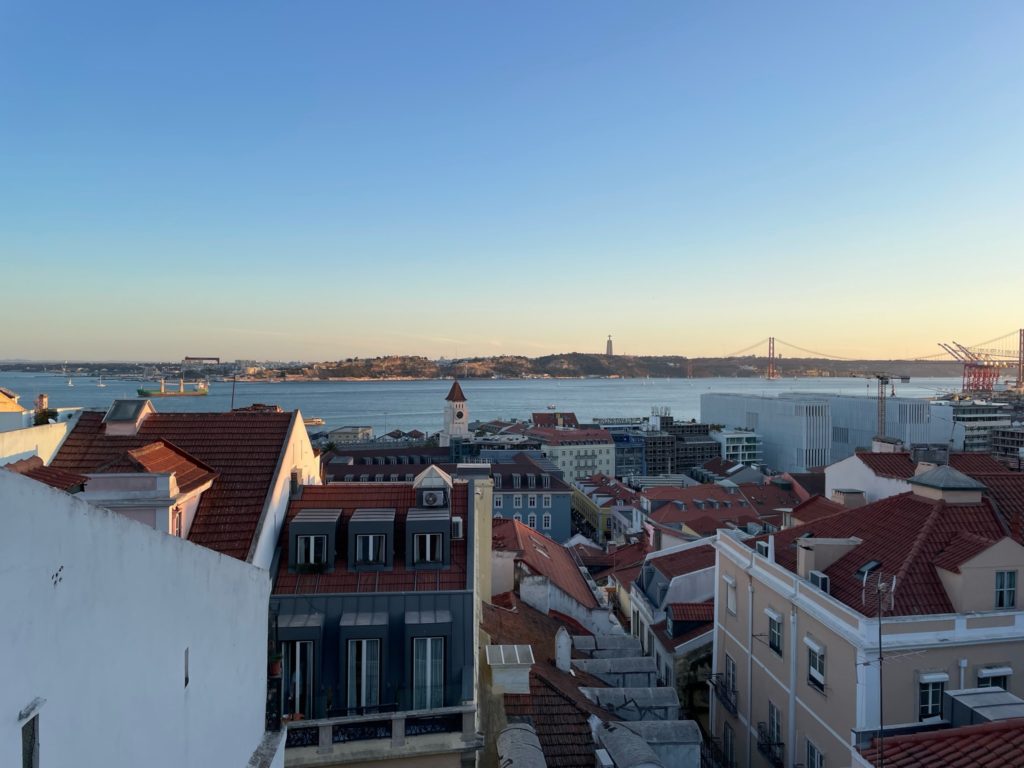
Day 2 brings blue skies and warm weather again. We meet up with our guide Pedro from City Unscripted for our Tapas and Tascas tour. It’s a few minutes into the tour and we hit a small restaurant to try delicious Portuguese egg custard tarts called Pasteis de nata. A sweet custard filing fills a flaky crust. A flavour bomb hits your palate and you can’t help moan at its sweetness. We follow this with a small glass of Ginjinha which is a liqueur made from sour cherries. It is packed with sweetness and sour at the same time.
The walk around Lisbon offers amazing vistas and expansive squares (Pracas). We take the escalators at the train station to avoid lineups go to the top of Elevador de Santa Justa which offers beautiful vistas of the city below.
Another stop is to taste the Bifana, which is a fried pork steak sandwich alongside a beer to quench our thirst which is a staple of the working lunch crowd.
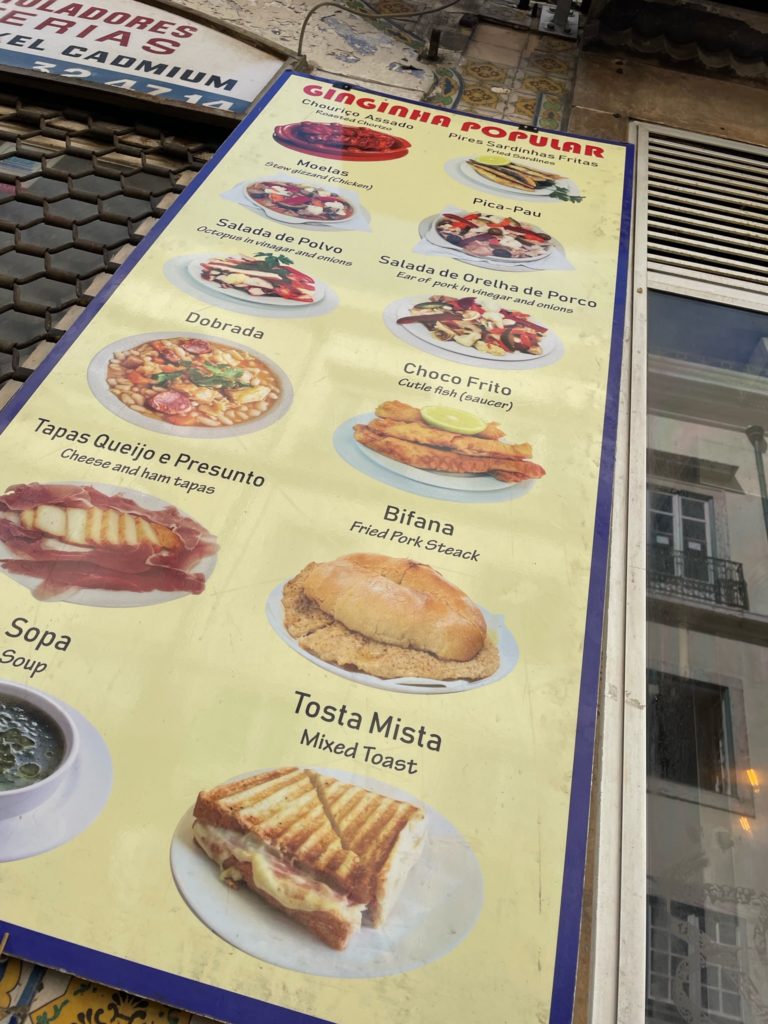
Lisbon, the capital city of Portugal is a city built on hills, some pretty steep and the cobblestone is so polished that it is not uncommon to slip and glide on them going down. The sidewalk are gorgeous though. Different patterns cover them. My calves are getting a vigorous stretch and they become my human brakes so I don’t go flying down the hilly streets!
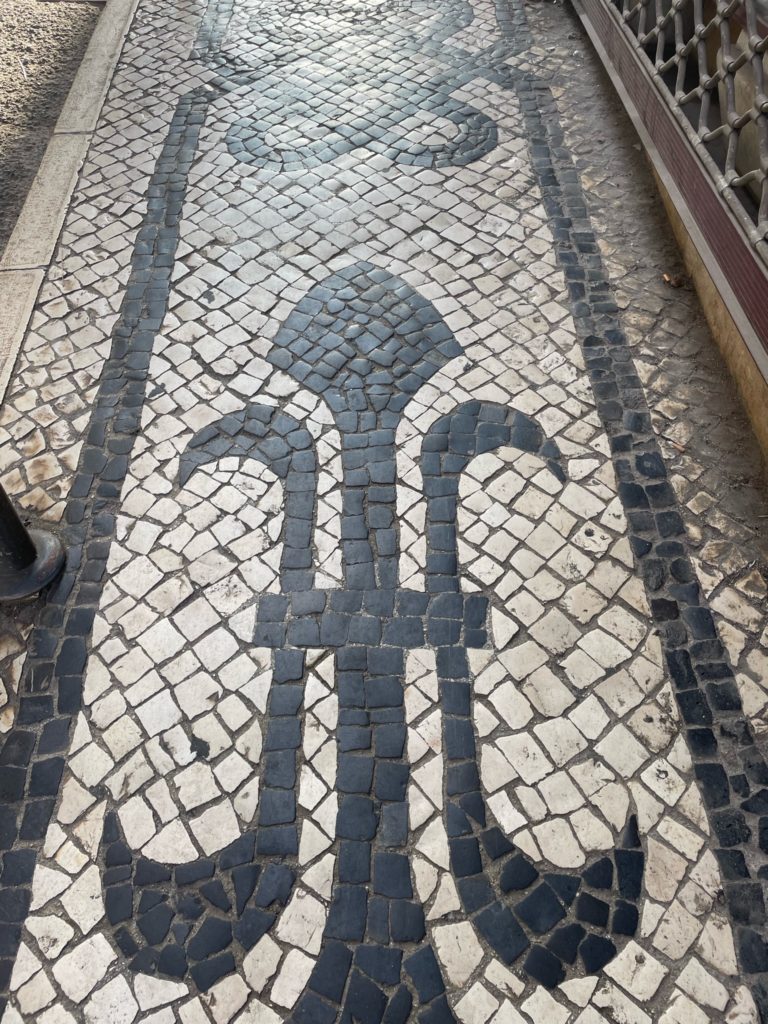
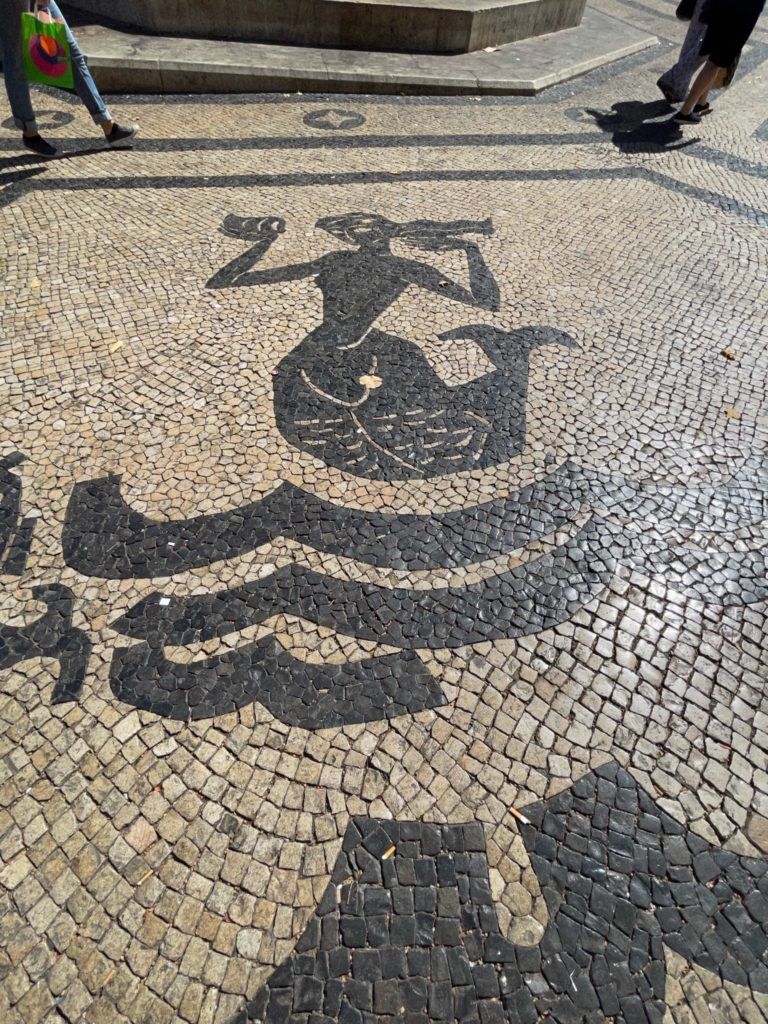
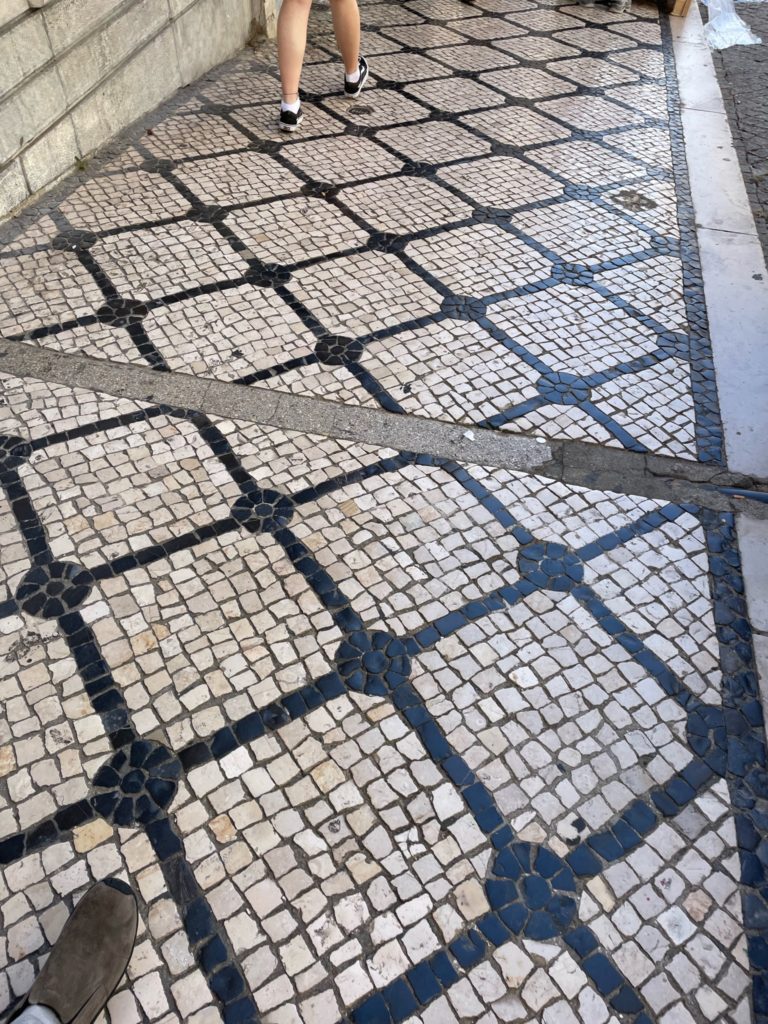
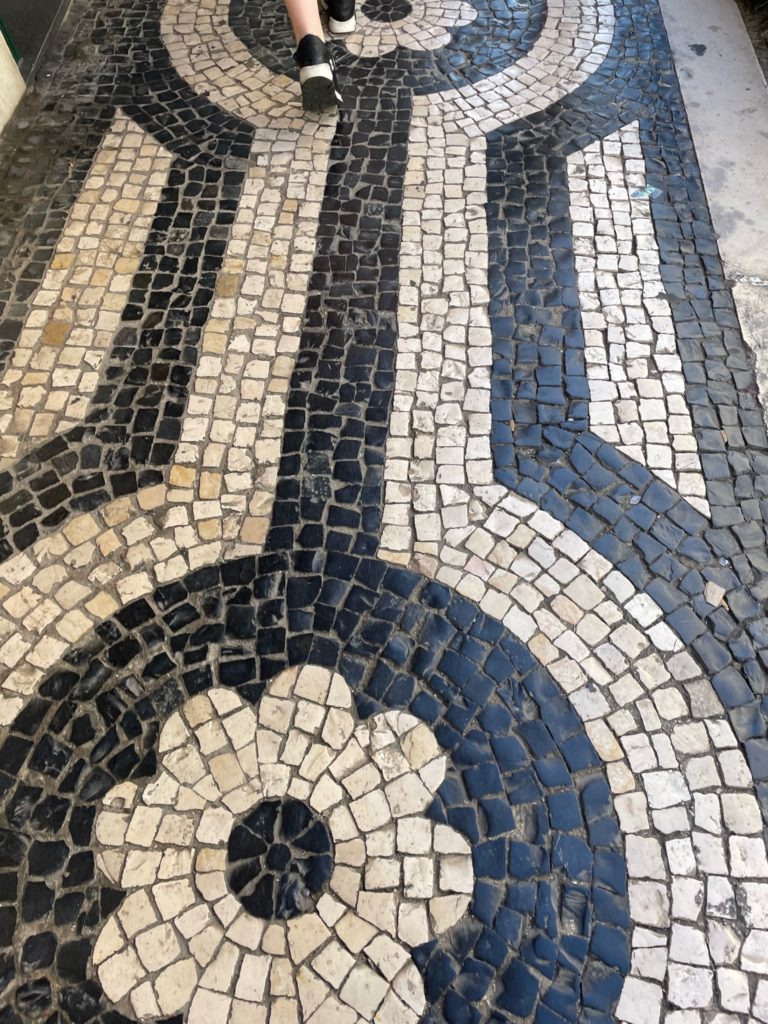
More beer is consumed along the way with a final stop for different fish tastings such as sardines, cuttlefish in black ink and gar in a garlic sauce. So yummy with a bottle of vino verde!
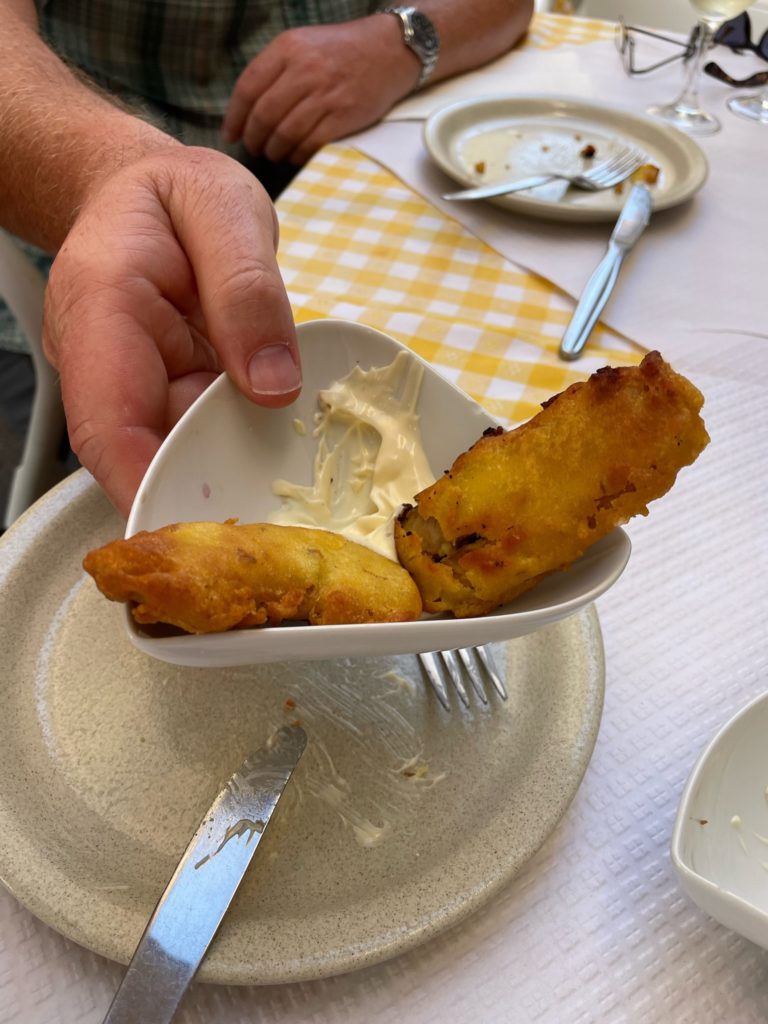
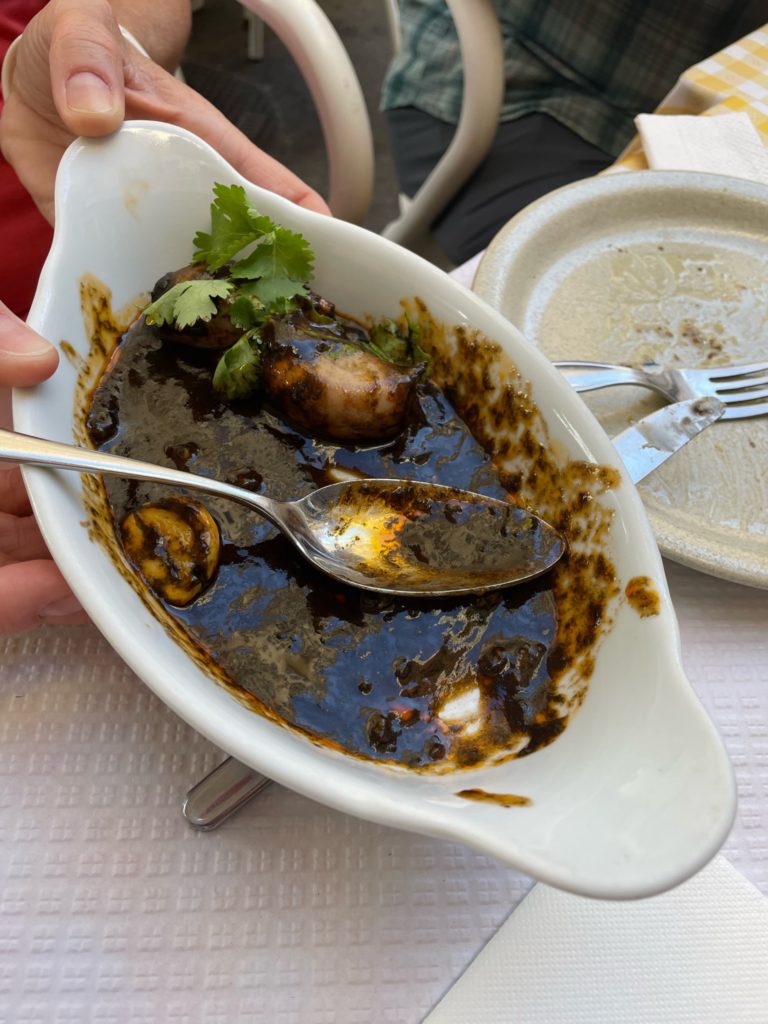
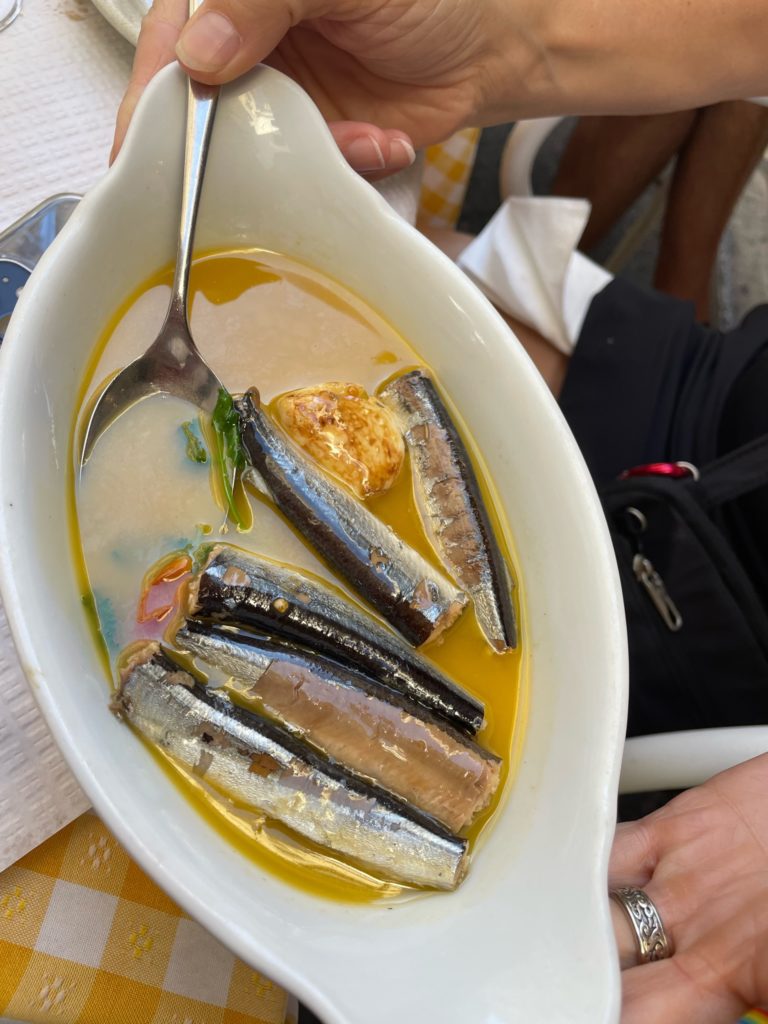
Lisbon has so many museums if one is so inclined to visit. Maritime, tile, coaches, design, fashion, money, pharmaceuticals, marionette etc… and my favourite—The Milk Station Museum! Dedicated to the distribution of quality-controlled milk to children during the lactation and paediatric support period.
It is the buildings in Lisbon that catch the eyes. They are full of glazed blue ceramic tiles or azulejos are that decorate the winding streets. They cover the walls of train stations, restaurants, bars, public murals, and fountains, churches, and altar fronts.
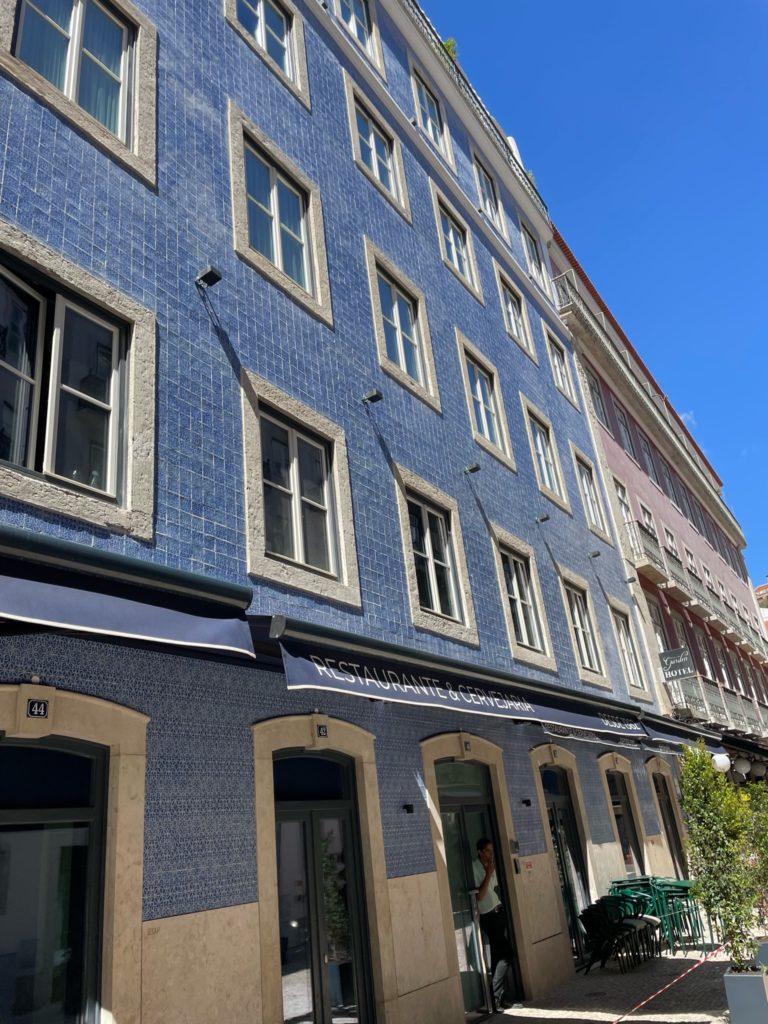
For a little nightlife, one can visit the pink street that is also covered with hanging umbrellas.
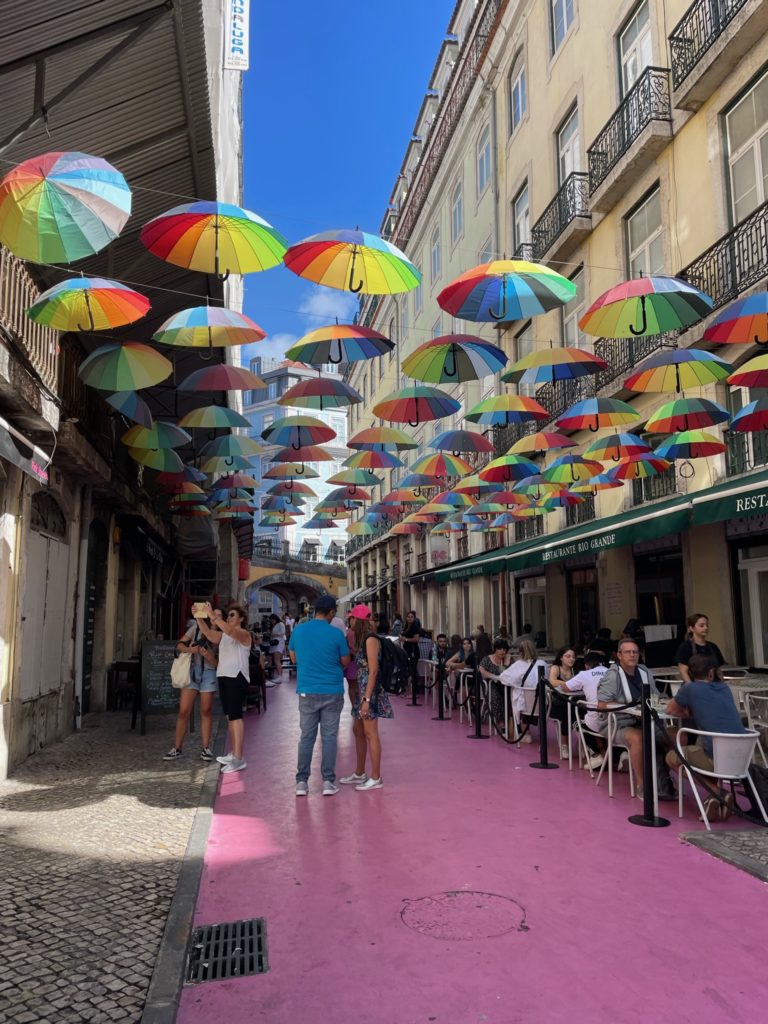
On Day 3, we head out for a cultural tour with Lisbon Chillout Free Tour. We learn so much of Portugal’s history, the revolution and its people. One of the highlights is the Alfama district. It’s the oldest district of Lisbon,and it means fountains or baths from the Arabic Al-hamma. It’s a poor neighbourhood with narrow streets where cars can’t navigate but full of life and colour.
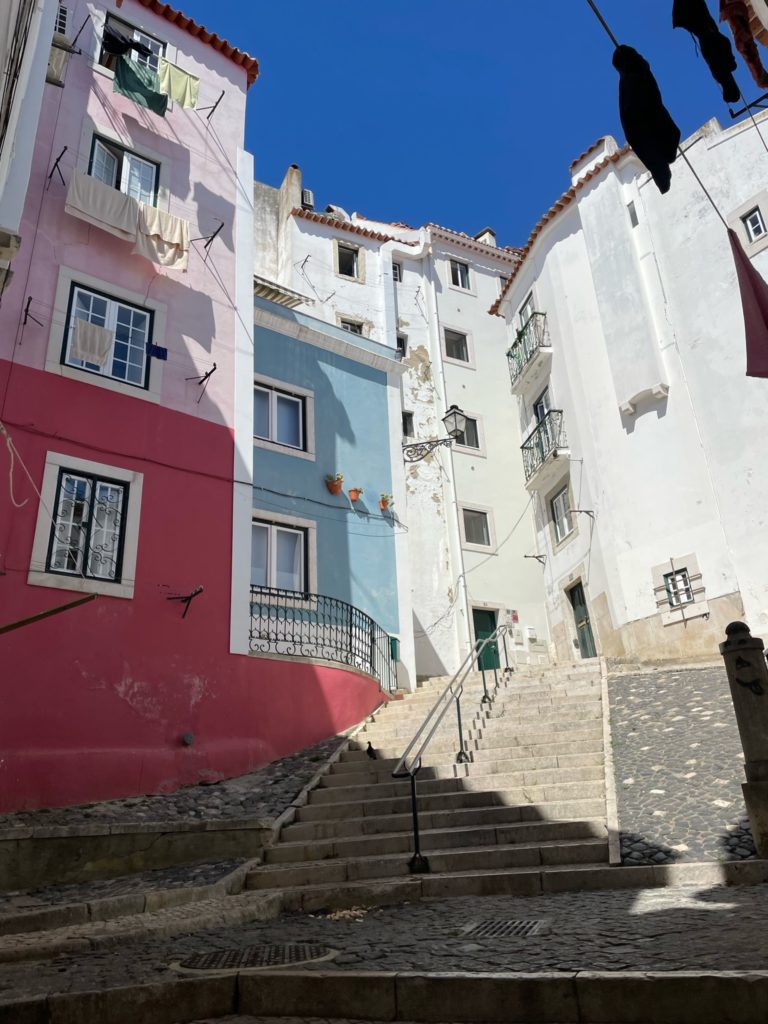
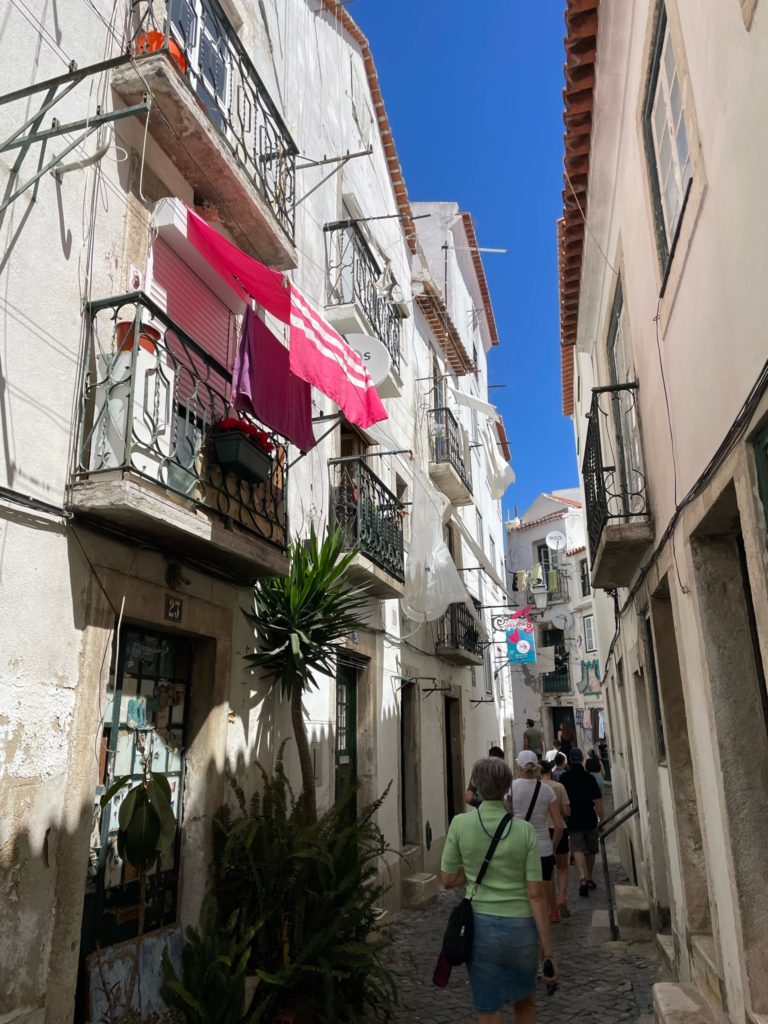
Just beyond the Alfama district, we climb the hilly street to reach the Miradiuro da Graca for a dramatic sweeping view of the city. A bottle of beer is necessary to quench our thirst from that arduous climb!
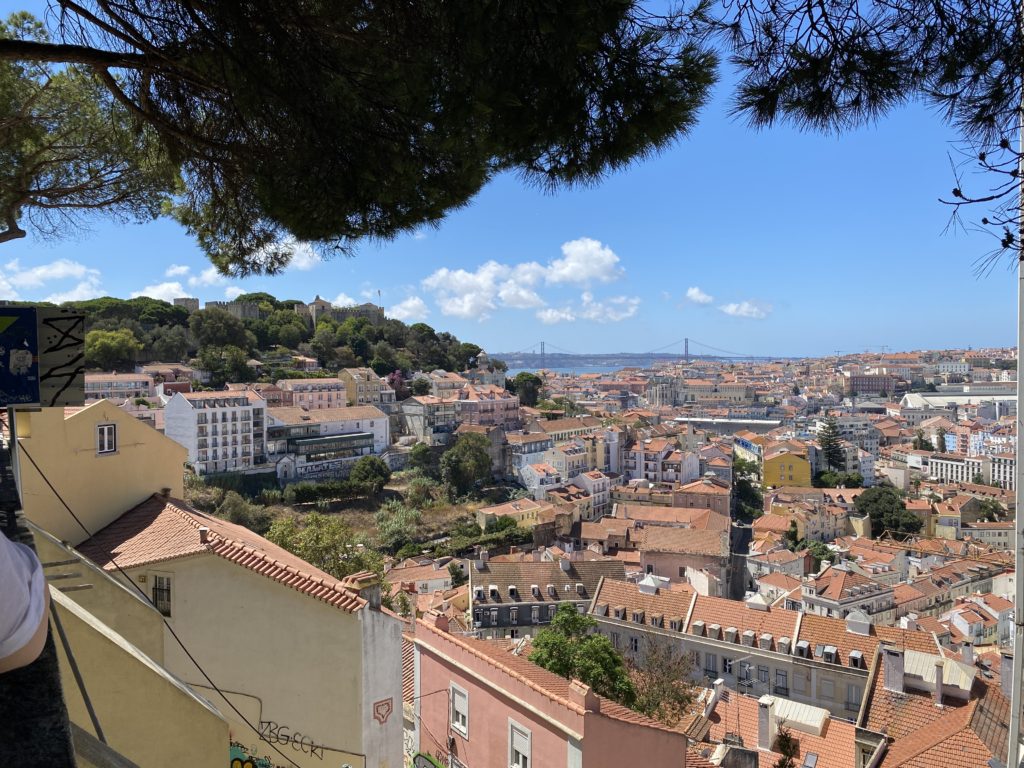
Finally we cap off the night with an al fresco dinner at Mar Ao Carmo seafood restaurant. Rain threatens our dinner for a few moments but the rest of the night is blessed with guitar singers, magical glow of lights from the Museu Arqueologico do Carmo. Hot bowls of seafood swimming in a delicious sauce accompany our wine and make for a perfect end to our Lisbon trip.
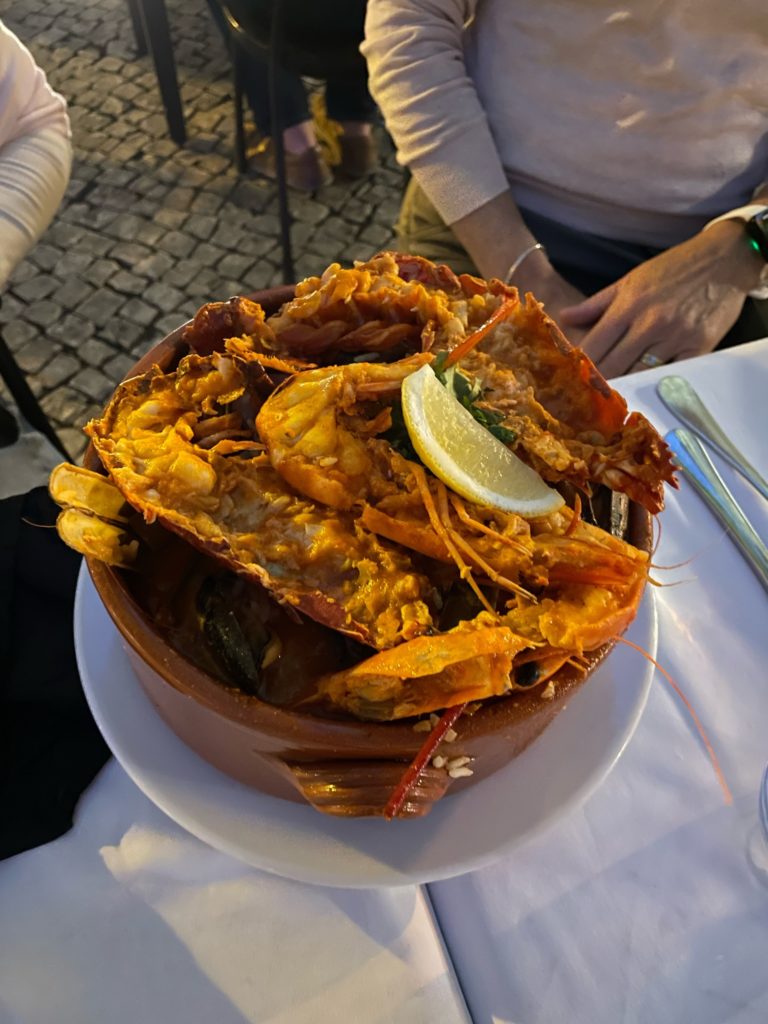
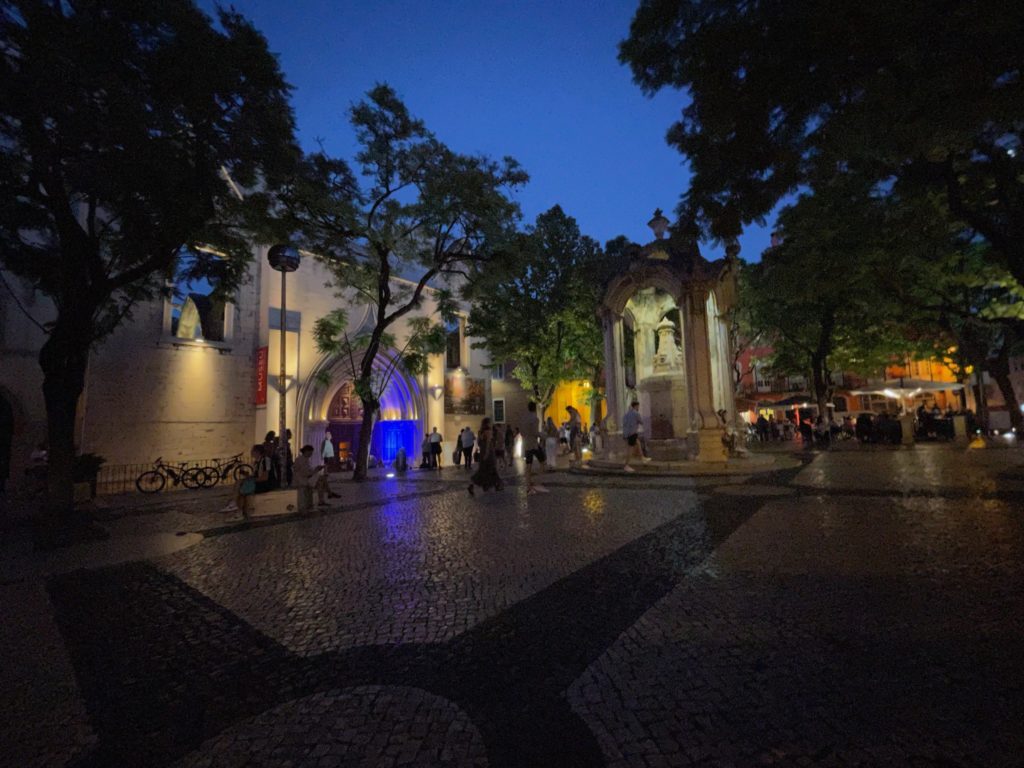
On to Porto next!
Recent Comments